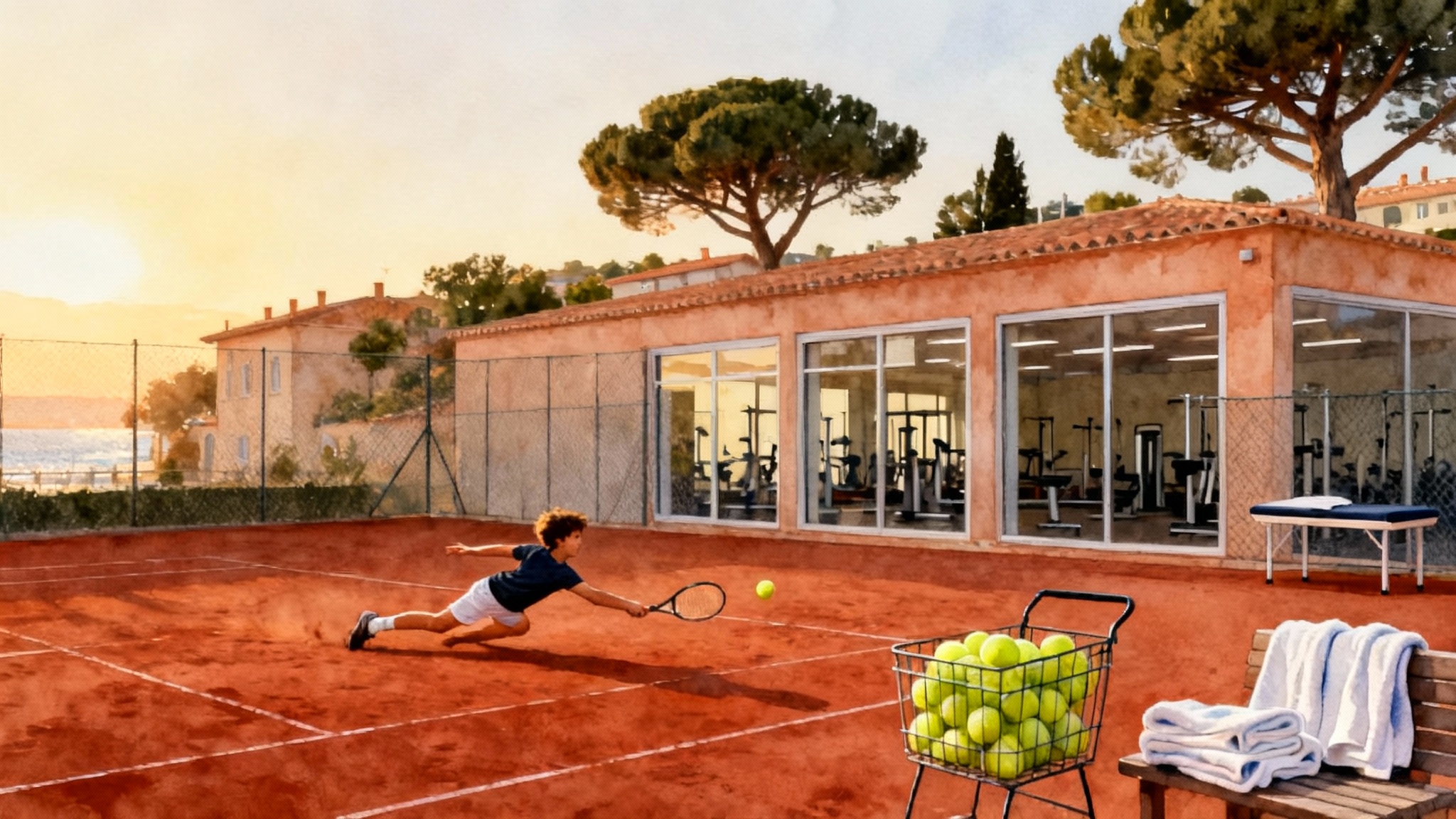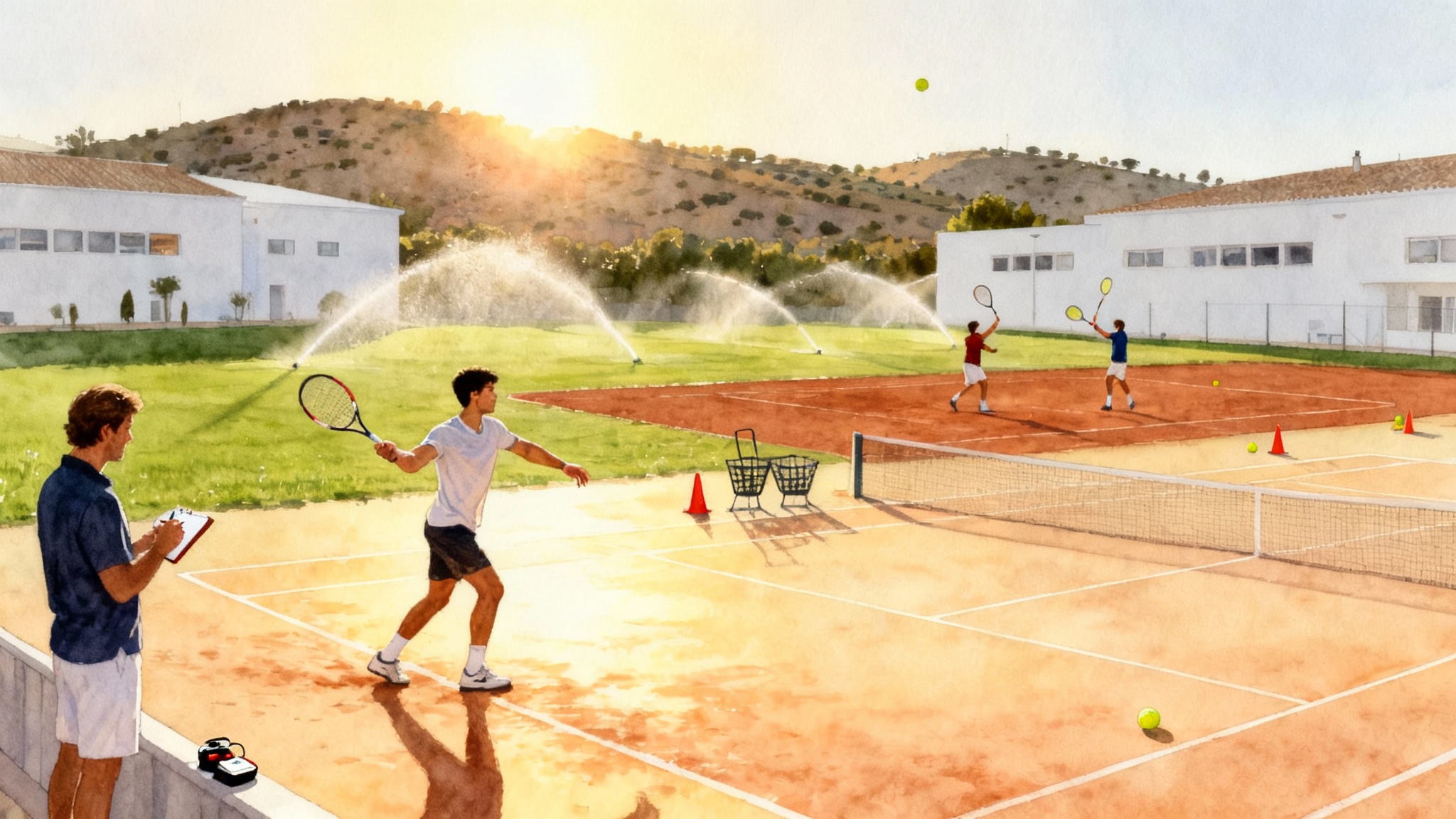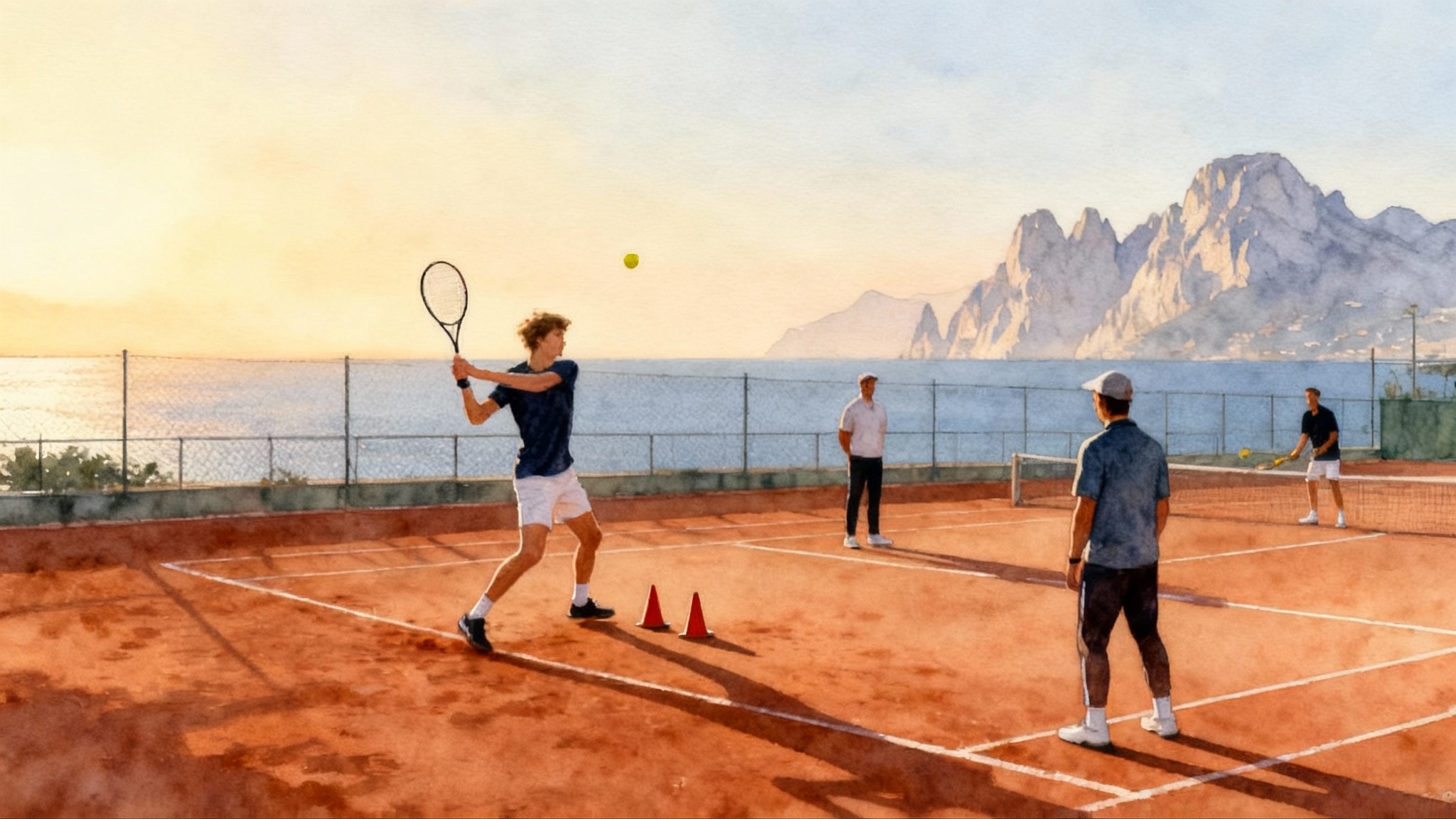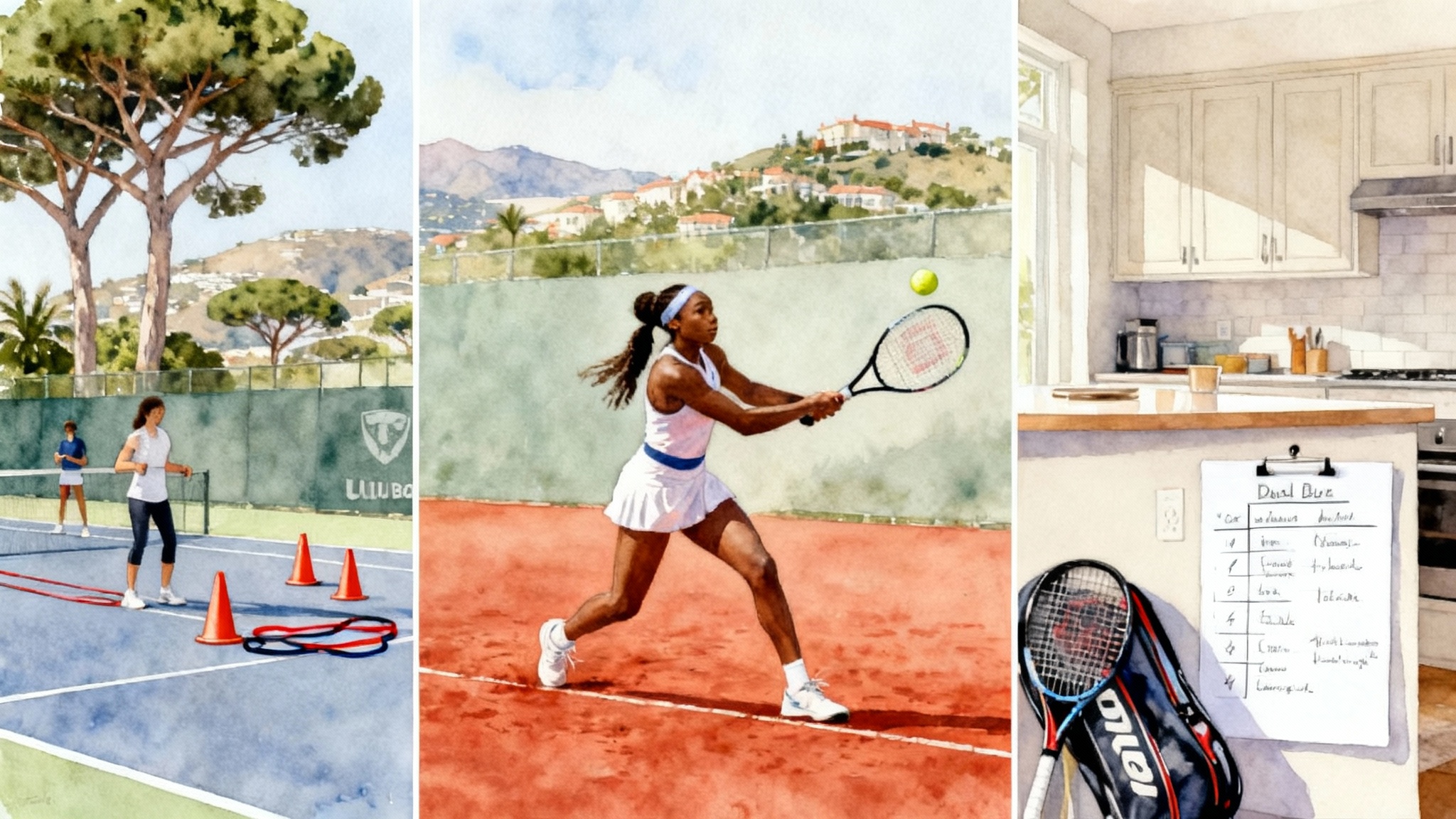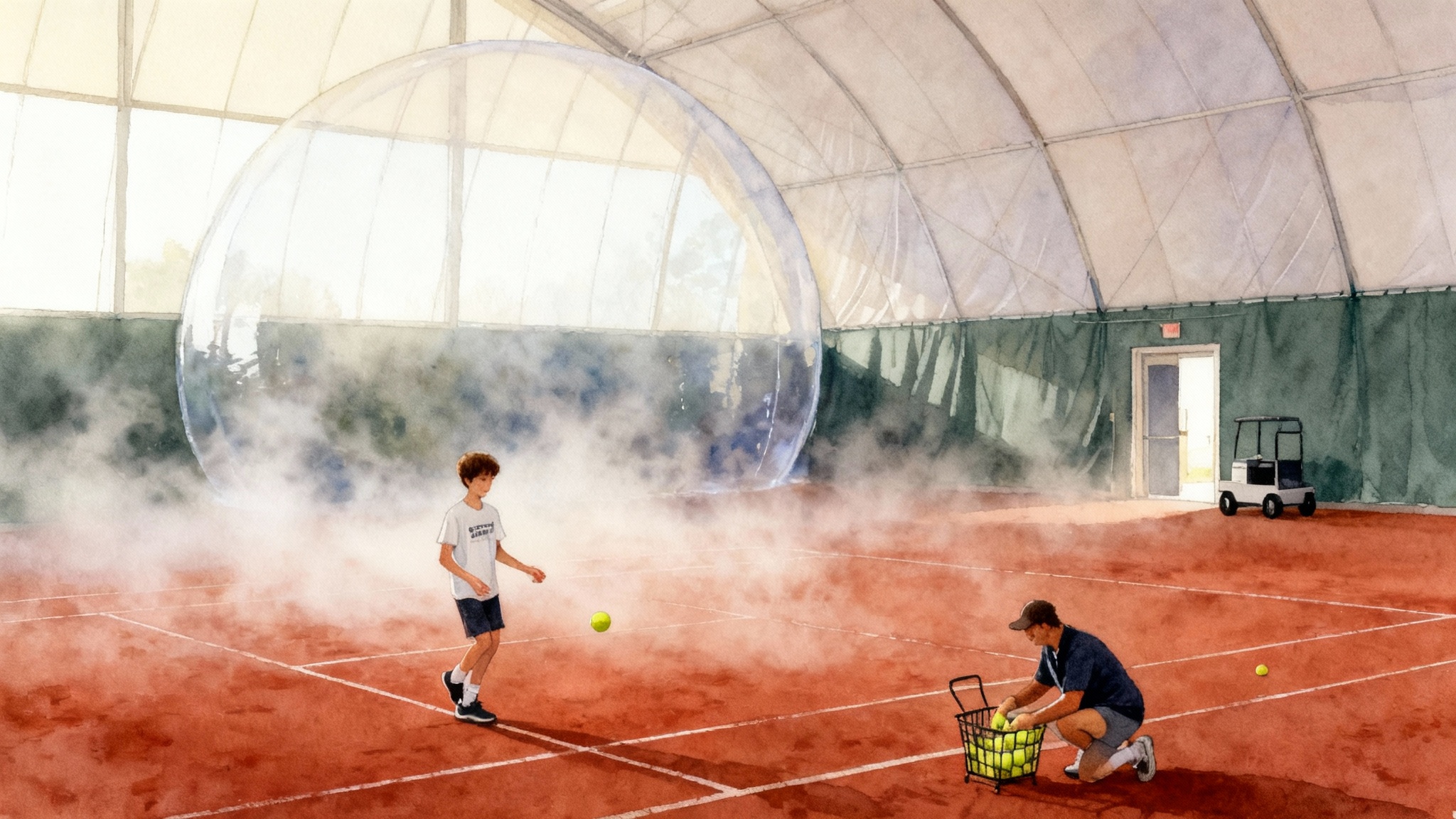From Beijing’s Potter’s Wheel to Barcelona: Zheng Qinwen’s Rise
How a scholarship at Carlos Rodríguez’s Potter’s Wheel in Beijing and a bold 2019 move to Barcelona shaped Zheng Qinwen’s pro toolkit, powered her Australian Open final run and Olympic gold, and what families can copy.

The child who left home for a chance
Before television cameras and Arthur Ashe Stadium night sessions, there was a quiet decision in a Chinese living room. An eight year old from Shiyan left home to board in Wuhan. A few years later, she moved again to Beijing, where Carlos Rodríguez, the coach who guided Justine Henin and Li Na, saw more than a promising forehand. He offered practical structure, a bed in the athletes’ quarters, and something even rarer in junior tennis: a plan. That plan began when Zheng Qinwen accepted a scholarship at Rodríguez’s Potter’s Wheel academy in Beijing, a program that prized daily habits as much as backhands. The offer is described by a former Potter’s Wheel trainer who worked directly with Zheng in a detailed interview: former trainer’s scholarship account.
Scholarship does not mean shortcuts. It means a schedule. At Potter’s Wheel, days were built on predictable blocks: morning footwork, mid day technical drills, afternoon point construction, and evening mobility. The boarding environment layered in responsibility. Bedtime is as much athlete development as acceleration ladders. If you can manage laundry, homework, and body maintenance at 13, you are already learning to manage the tour at 20.
Crossing continents at 17: why Barcelona in 2019
By 2019, Zheng and her family made another decision. They relocated to Barcelona. Spain offered clay, volume, and a training culture that treats patience as a weapon. On clay, the ball talks longer. Points breathe. If your identity is heavy forehand and early backhand redirect, Spain is a classroom that always stays open. For a broader look at how Spanish systems shape champions, see how Equelite forged Alcaraz.
The move also widened her support map. Training in Barcelona exposed Zheng to European sparring partners, multilingual coaches, and a competition calendar that reduced jet lag and surface whiplash. The practical effects show up in small ways. She learned to manage slower practice courts without getting impatient. She learned to translate cues across languages. Most important, she learned to build the week, then build the month, then build the year.
For another case of a cross border base accelerating progress, study Andreeva’s Elite Tennis Center surge.
Building a pro toolkit under Pere Riba
In Spain she came under the guidance of Pere Riba, a former top one hundred professional who has become a meticulous builder of foundations. Under Riba’s team, Zheng’s tool kit matured in four visible areas.
- Serve patterns. First serve out wide on the deuce side to open the forehand plus one. Body serve on break points to reduce risk. Second serve with added kick to buy depth for the next ball. The theme is not raw speed. It is location that sets up the forehand.
- Backhand redirect. Barcelona reps taught her to change direction with the backhand without leaking errors. She learned to aim high through the back of the court, not flirt with the sideline, until the lane truly opened.
- Return posture. Knees lower, strings higher, contact earlier. Against bigger servers she shifted back half a step to let the ball complete its rise on clay. On hard courts she crept forward to take away time. The idea was “win the first two shots” rather than “win the rally.”
- Fitness architecture. Strength and conditioning was not a mystery hour in the gym. It was periodized across the season. Heavy lifting blocks in the off season. Power maintenance in the first quarter. Mobility and speed microdoses on travel days. Rob Brandsma, who served as a fitness lead and even stepped in on court when needed, helped knit physical work to technical goals. When the task was longer exchanges on clay, the gym emphasized repeat sprint ability and calf endurance. When the calendar turned to hard courts, the emphasis shifted to deceleration and shoulder care.
Coach changes are inevitable at the top. Zheng had a short spell with Wim Fissette in 2023, collected match wins, then returned to Riba for 2024. Rather than chasing a magic voice, the team built a durable playbook that travels: serve locations, first ball intentions, and fitness habits that keep the plan available under stress.
Breakthroughs that validated the path
The Australian Open in January 2024 marked her first major final. She beat who was in front of her, handled the first week like a seasoned seed, and then ran into a defending champion in the title match. There is a useful lesson in that run. She did not need perfect opposition to prove her level. She needed to survive the small storms that sink inexperienced runners. She played clean tie breaks, held serve under scoreboard pressure, and kept patterns clear when adrenaline begged for winners. Those are academy skills disguised as Grand Slam heroics.
Seven months later, on the same clay courts where the French Open is staged, she won Olympic singles gold for China. She beat world number one Iga Swiatek in the semifinal and then defeated Donna Vekic in the final to make history for her country. The event recap from the International Olympic Committee captures the arc and the stakes: Olympic gold in Paris 2024.
Why did the Barcelona phase matter here? Because the Olympics brought Paris wind, slow clay, and day to day variability. Her ability to repeat patterns, reset emotionally between points, and hold her legs on long exchanges was not an accident. It was the Spanish clay curriculum, validated by medals.
What families can learn from a China to Europe path
Moving a teenager across continents is not a fairy tale. It is logistics, money, language, and patience. Zheng’s journey surfaces practical lessons that families can use to evaluate a China to Europe route. If you want a domestic on ramp with a bridge to Europe, explore MPSC Tennis Academy’s Europe pathway.
- Test boarding readiness at home first. Before flying to Europe, try a six week domestic boarding block. Can your player self manage meals, laundry, and recovery without reminders? If not, the move will add stress that steals from training quality.
- Scholarships are contracts of behaviors. If an academy offers financial support, clarify the deliverables. Ask for a written weekly plan, the evaluation cadence, and the exact criteria that protect or revoke the scholarship. The Beijing offer that changed Zheng’s life came with structure, not just waived fees.
- Prioritize clay proficiency, even if targets are hard courts. Clay time buys decision making under fatigue and resilience in neutral rallies. A Barcelona base gave Zheng a safe lab to practice longer patterns, then she ported that patience onto hard courts in Melbourne and New York.
- Define job descriptions across the team. Who analyzes serve data? Who owns return patterns? Who leads the physical plan? Who communicates tournament logistics? Periods when a fitness coach shouldered more responsibility worked because roles were explicit. Families should write a simple one page org chart and review it monthly.
- Use a language ladder, not a language leap. Commit to 30 minutes a day of Spanish or English during the first six months in Europe. The goal is not fluency. The goal is to reduce friction in feedback. If your player can understand “load the right hip” and “higher finish,” the training week gains hours of focus.
- Keep school aligned with training rhythms. Choose a schooling option that flexes around tournament travel. The key indicator is not grades alone. It is stress. If class deadlines routinely collide with key events, you will pay for it on court.
- Measure one percent improvements. Every four weeks, record three things: first serve percentage, unforced error count on the backhand redirect, and fitness test repeat times over 20 meters. If two of the three improve, the plan is working. If not, change a variable and test again.
- Budget for reps, not for commercials. Fancy facilities do not win matches. Court availability, coach attention, and quality sparring partners do. When comparing academies, rank them by hours of on court and live ball point play your child will get on most days. Then factor travel costs to the nearest cluster of tournaments. The right academy is the one that makes it easy to practice hard and compete often.
A sample week that mirrors the Beijing to Barcelona path
For families who want something you can print and circle, here is a model week that echoes the Potter’s Wheel structure and the Spanish clay rhythm. Adjust volumes by age and growth stage.
-
Monday
- AM: Serve location block. Eight baskets. Targets taped on service boxes. First ball forehand pattern after every serve.
- Mid: Lower body strength. Split squats, trap bar deadlifts, ankle stiffness work. Finish with med ball rotational throws.
- PM: Pattern play. Crosscourt forehand heavies, then backhand redirect. Film ten minutes of point play for evening review.
-
Tuesday
- AM: Return plus one. Two positions on return depth. Neutral ball drill to neutralize big servers.
- Mid: Mobility and shoulder care. Sleeper stretch, band work, cuff eccentrics.
- PM: Live sets on clay or slow hard court. Goal is pattern discipline, not score.
-
Wednesday
- AM: Transition and finish. Approach from short ball. Volley depth. Overhead footwork.
- Mid: Speed work. Four by twenty meter sprints with full recovery. Lateral shuffle timing.
- PM: Off or light hit with serves only. Evening match video review with coach notes on two decisions per game.
-
Thursday
- AM: Forehand heavy day. Inside out fitness ladder. Ten ball tolerance targets.
- Mid: Upper body strength. Pull ups, dumbbell press, anti rotation core.
- PM: Tie break sets. Simulate scoreboard pressure. Practice between point routines.
-
Friday
- AM: Backhand stability. High heavy crosscourt tolerance. Change direction on the third ball only.
- Mid: Recovery. Soft tissue work. Contrast showers. Nap.
- PM: Mixed doubles style drills to vary reads and net looks.
-
Saturday
- AM: Match play in a nearby tournament or seeding ladder. Score matters today. Collect simple stats: first serve percentage, return depth, and unforced errors on the first four balls.
- PM: Light bike and stretch. Family dinner. No screens after 9 p.m.
-
Sunday
- Off. Walk. Journal three sentences: what I did well, what I learned, what I will do next week.
The coach change question, answered with process
Families often ask if they should switch coaches to unlock the next level. Zheng’s path shows a better question. How does the process continue when faces change? When she shifted teams, her core remained the same. Serve patterns set up the forehand. Return posture won first strikes. Fitness fed the game plan. That continuity made change a tool, not a trauma. If you ever change coaches, bring the written playbook, recent videos, and the last eight weeks of training notes to the first meeting. The new coach inherits clarity rather than guessing.
Red flags to watch when shopping for a European base
- The head coach is rarely on court. Star names are valuable only if they coach.
- Promises focus on ranking points, not daily behaviors. Rankings follow behaviors.
- No plan for injury prevention. Ask to see the shoulder, hip, and ankle menu.
- Sparring partners are mostly younger or weaker. Your player will not stretch.
- Feedback is vague. You should hear “deep to backhand, then forehand into the open court,” not “be more aggressive.”
A simple timeline if you are considering the move
- Months 1 to 2: Domestic boarding test. Track self management, sleep, and punctuality.
- Months 3 to 4: Two week trial at the target European academy. Collect a proposed weekly plan in writing.
- Months 5 to 6: Return home. Work the same plan with your local coach. Evaluate whether behaviors stick.
- Month 7: Decide. If yes, commit to one year. If no, book another trial with a different academy and repeat the process.
The template and its limits
Zheng’s journey is not a magic recipe. It is a template with variables. A taller junior with a flatter backhand might choose a faster base in the Czech Republic. A net driven player might split time between Spain and the Netherlands to find more doubles reps. Still, the principles travel. Build disciplined habits early. Choose environments that fit your style and stretch your patience. Keep a written plan that survives coach changes. Pair fitness to the game you are trying to play, not to generic workouts you found online.
The story returns to the wheel
A potter’s wheel spins at a steady pace. Hands make tiny adjustments. Clay gives and firms. Years later, you hold something useful that looks simple and is anything but. Zheng Qinwen’s rise follows that image. Beijing gave her turn by turn discipline. Barcelona gave her longer rallies, stronger legs, and a team that made the plan repeatable. The Australian Open final showed her how near the ceiling was. The gold in Paris proved she could stand on it.
If you are a family weighing a China to Europe training route, do not chase the headlines. Chase the habits. Then choose the academy that will help your child repeat them when no one is watching. The medals, if they come, will look sudden from the outside. Inside the team, they will feel like the most familiar thing in the world: another good day, carefully built, on a wheel that has been turning for years.
